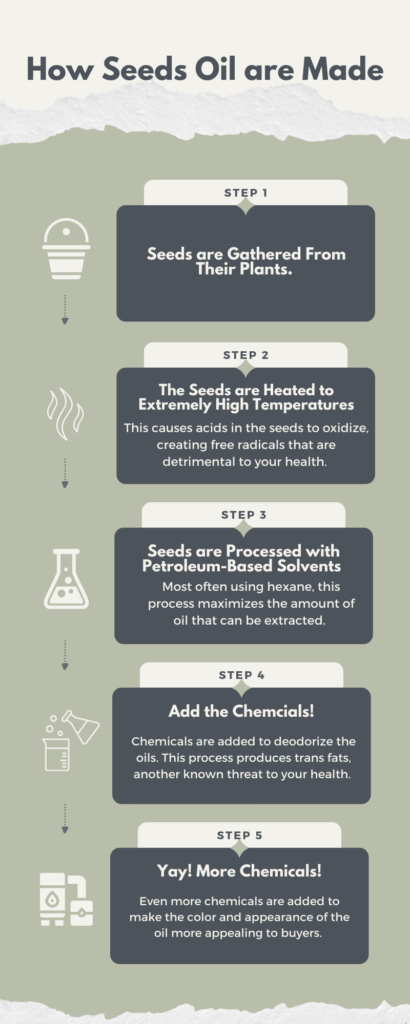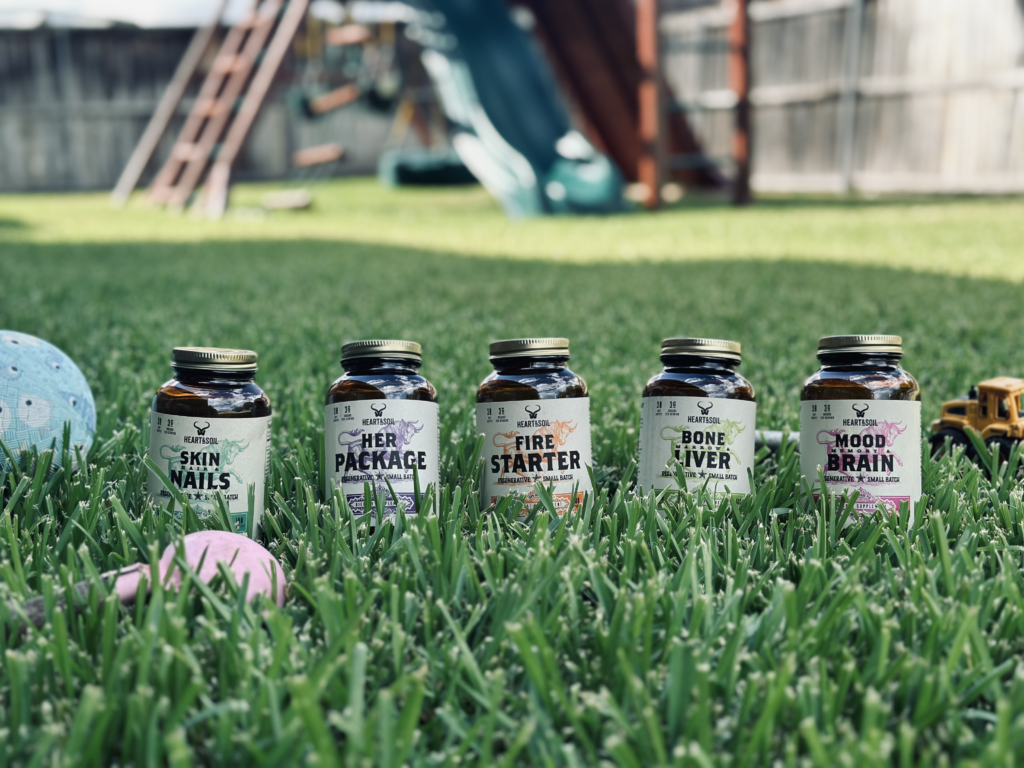Introduction
Have you ever checked the ingredients list of the foods you buy from the store? Or the ones in your favorite shampoo or body wash? What about your make-up? I guarantee that seed oils are hiding where you least expect them. And I don’t know about you, but I don’t think it is a coincidence that the rise in chronic disease happens to coincide with the rise of industrial seed oils and highly processed foods.
I want to help you understand why seed oils are bad and where they come from. So here are 8 Reasons to Ditch Seed Oils and why they are harming your health. And please, don’t be misled. Just googling seed oils brings up plenty of articles from Harvard and other “official” sources stating the opposite. But if you read my post, The Surprising History of Milk, you know why I’m a bit skeptical of these bigger institutions, and why I think you should be too.
A Quick Note on Terms
If you are new to the discussion on seed oils and the danger they pose to your health, here is a quick break down of the terminology. Seed oils are high in linoleic acid, which is an essential omega-6 polyunsaturated fatty acid (PUFA). These fatty acids are consumed through food. Prior to the 1930s the typical consumption of these acids was 1-2% of daily calories. The average consumption today is more than 7%.1
1. Food-Grade Seed Oil Made in a Soap Lab
Procter & Gamble created the first seed oil from the waste products of their cotton production. They originally wanted a cheaper alternative to animal fats for their new bar soap. After a German chemist told them he could create a solid fat from a liquid, the R&D began. Thus, the first industrial seed oil for food consumption was created in a soap lab. This seed oil came to be known as good ol’ Crisco.
2. Industrial Seed Oils are Not Naturally High in Oil
The process to extract oil from cottonseeds, soybeans, corn, etc. uses harmful chemicals and practices that further harm your health, as shown in the diagram below:

3. A High Ratio of Omega-6s to Omega-3s is Bad for Your Health
Until about 100 years ago, the dietary intake ratio of Omega 6s to Omega 3s was 4:1 or less. The average today is 20:1, with some highly processed foods as high as 50:1 or even 75:1! These large ratios leads to systematic inflammation throughout the body, which is the root of almost all chronic diseases.2
The rise in seed oils is a contributing factor to the current obesity crisis. And obesity alone increases your chance of developing type 2 diabetes, autoimmune issues, and hypertension. Some studies even show that an excessive intake of seed oils can lead to cancer, cardiovascular disease, and autoimmune diseases.3
4. Diets High in Seed Oils During Pregnancy Can Delay Infants
One study found that high levels of linoleic acid (Omega-6s) in pregnancy has a positive association with autistic traits in children at 6 years old. It also determined that prenatal diets with high Omega-6 to Omega-3 ratios are associated with a 2-fold increase in delayed psychomotor and mental development in children.4
5. Seed Oils Transfer Through Breastmilk and Can Affect Neurodevelopment
High amounts of seed oils in a mother’s system directly impact the health of her baby. Because of the delicate balance of Omega-6s to Omega-3s, it is important that those who are pregnant and breastfeeding limit their intake of seed oils.
Several studies show that linoleic acid (LA) accumulates in breast milk. So just as the consumption of LA has risen from 1-2% of calories to 7% in adults, the amount of LA in breastmilk has also risen from 7% to 12% of total fatty acids. And this 12% composition corresponds to 8% of calories, which is a 4-8 fold increase over the 1-2% required for developing infants.5
And while infants need fat and a minimum amount of linoleic acid for optimal health, one study shows that high levels of LA (over 9.7% of fatty acids) in breastmilk may be responsible for “reduced motor and cognitive scores” in 2-3 year olds and reduced verbal IQ in 5-6 year olds.6 There is even an inverse correlation between LA in breastmilk and the child’s cognitive skills at 15 years old.
6. Seed Oils Make You Crave More Junk Food
The consumption of seed oils increases the production of two endocannabinoids in particular, 2-AG and anandamide. These two compounds mess up the satiety receptors in our brain. This, in turn, leads to more cravings for these unhealthy foods.7
7. Seed Oils can Increase Your Risk of Skin Cancer
In one study on the association between fat intake and skin cancer, researchers found that a diet high in Omega-6 polyunsaturated fats (Linoleic acid) led to an increased risk of developing melanoma.8 And another study found that people with melanoma had higher levels of polyunsaturated fats in their adipose fat tissue compared to those who did not consume a diet high in these fats.9
8. It Takes Almost 2 Years to Remove Seed Oils From Your Body
The half life of linoleic acid in the body is 680 days, nearly 2 years! This means it could take up to 6 years to remove 95% of the LA from your body!10 In our modern world proliferated with seed oils, think about how difficult it would be to get rid of all the seed oils from your body without having to start over.
So What Do You Think?
If you or anyone in your family is struggling with chronic health issues and you still consume a standard American diet, I urge you to take control of your own health and ditch the seed oils. Trust me, it isn’t easy, but it starts by throwing all of the industrial seed oils in the trash. Doing this one simple task will surely send you on your way to a healthier you.

Ladenbod strives to make natural living simple by providing you with the recommendations, resources, and education you need to help you find the best natural and holistic items for your family to thrive, in one convenient location.






